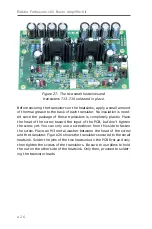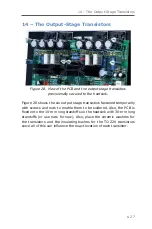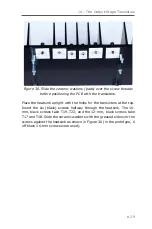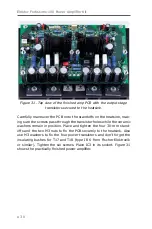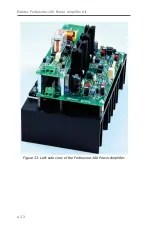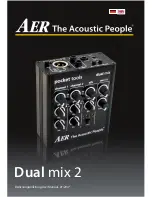
16 – Recommendations for the Enclosure
●
35
Figure 36 shows the finished amplifier with the two wires installed be-
tween K2 and K5, and with LED5 now PCB-mounted.
16 – Recommendations for the Enclosure
Before drilling holes in the heatsink, consider the enclosure you want
to use for the Fortissimo-100 Audio Power Amplifier — specifically,
how to secure the heatsink to the back of the enclosure. In case of a
standard enclosure, the back panel is probably traded for separate alu-
minum plates, which is easier than making large openings in a metal
panel. At both sides of the heatsink, enough room is available for M4
screws between the outer fins and going besides the PCB.
Because the amplifier PCB is close to the heatsink there must be
enough holes to permit generous ventilation at the top and bottom.
Even better is a wide slot going the full length of the PCB (or longer)
alongside the heatsink in the top and bottom panels, thus guarantee-
ing a good convection of air between the PCB and the heatsink. Also,
the remainder of the enclosure’s top and bottom sides should have
plenty of ventilation holes considering that the power supply will get
hot, too.
To keep the length of the supply wires to an absolute minimum, the
output of the power supply should be positioned as close as possible
to screw terminal block K1 on the amplifier PCB. The type SMPS800RE
switch-mode power supply (SMPS) is recommended for use. Accord-
ing to the SMPS800RE’s datasheet, extra output capacitors are not
recommended: [quote] ‘if the capacitance is too high the over-current
protection might trip during power ON’. [end quote] The maximum
conductor cross sectional area (csa) of the wire inserted in the PCB
terminal block type MKDSN 1,5/ 3-5,08 supplied in the kit is 1.5 mm
2
.
However, the size of the pads at the top side of K1 permit soldering
much thicker wire directly onto the PCB. In the Elektor prototype ver-
sion, the output of the SMPS has three “Faston” (a.k.a. spade) termi-
nals, hence thicker wire is not a problem here.
Important Notice
The design of the PCB is explicitly intended for use as a mono am-
plifier! Do not use a single power supply for two amplifiers. This will
cause ground loops and degrade performance of the amplifiers and can






